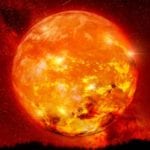 Creepy
Creepy  Creepy
Creepy  Technology
Technology 10 Scientific Breakthroughs of 2025 That’ll Change Everything
 Our World
Our World 10 Ways Icelandic Culture Makes Other Countries Look Boring
 Misconceptions
Misconceptions 10 Common Misconceptions About the Victorian Era
 Mysteries
Mysteries 10 Strange Unexplained Mysteries of 2025
 Miscellaneous
Miscellaneous 10 of History’s Most Bell-Ringing Finishing Moves
 History
History 10 Great Escapes That Ended Right Back in Captivity
 Weird Stuff
Weird Stuff 10 Fascinating Things You Might Not Know About Spiders
 Food
Food 10 Everyday Foods You Didn’t Know Were Invented by the U.S. Military
 History
History 10 Odd Things Colonial Americans Kept at Home
 Creepy
Creepy 10 More Representations of Death from Myth, Legend, and Folktale
 Technology
Technology 10 Scientific Breakthroughs of 2025 That’ll Change Everything
 Our World
Our World 10 Ways Icelandic Culture Makes Other Countries Look Boring
Who's Behind Listverse?

Jamie Frater
Head Editor
Jamie founded Listverse due to an insatiable desire to share fascinating, obscure, and bizarre facts. He has been a guest speaker on numerous national radio and television stations and is a five time published author.
More About Us Misconceptions
Misconceptions 10 Common Misconceptions About the Victorian Era
 Mysteries
Mysteries 10 Strange Unexplained Mysteries of 2025
 Miscellaneous
Miscellaneous 10 of History’s Most Bell-Ringing Finishing Moves
 History
History 10 Great Escapes That Ended Right Back in Captivity
 Weird Stuff
Weird Stuff 10 Fascinating Things You Might Not Know About Spiders
 Food
Food 10 Everyday Foods You Didn’t Know Were Invented by the U.S. Military
 History
History 10 Odd Things Colonial Americans Kept at Home
10 Science Fiction Doomsdays That Could Theoretically Happen
People have always had a morbid curiosity with the end of life on Earth. There are Biblical stories like Noah’s Ark that have natural disasters wiping out most of humanity. After World War II, the very real fear of nuclear annihilation brought out many books and movies that speculated about what the end of the world may look like if the bombs were dropped. In modern days, the fear has shifted toward environmental problems. However, out of the hundreds of pieces of fiction produced about the “End of Days,” which ones are legitimately possible?
10Hypercane
Innocent Venus
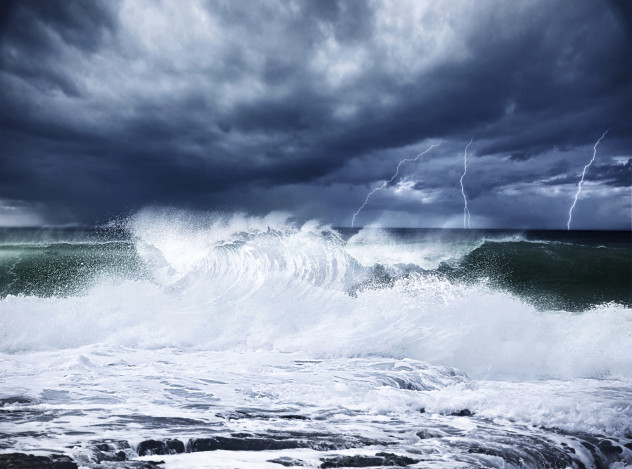
In this anime TV show from Japan, the world has been completely ravished by a series of hyper hurricanes. The hurricanes managed to kill five billion people, leaving economies and governments in shambles.
Terrifyingly enough, hyper hurricanes are theoretically possible. They were discovered by an MIT professor who named them “hypercanes.” A hypercane would be 64 kilometers (40 mi) high and have winds of over 965 kilometers per hour (600 mph). For some perspective, it would be eight times larger than the biggest hurricane ever recorded on Earth, and the wind speed would be double what humans have ever experienced. It would destroy everything in its path.
A hypercane could happen if a large area of the ocean (perhaps 65–80 kilometers, or 40–50 miles) became heated to 48.8 degrees Celsius (120 °F). The problem is that it wouldn’t just be one hypercane. A number of them would appear until the conditions dissipated. While they may only destroy cities on the coast, the problem is that the hypercane would go into the stratosphere which would bring water vapor into the ozone later. This would destroy the entire ozone layer within a week. Anyone who survived the hypercanes would have to live underground and hope the ozone layer would grow back.
9Dying Sun
Sunshine

It’s the year 2057, and the Sun is dying. Particles called “Q-balls” have entered the Sun, eating away at its core. Physicist Brian Cox, who served as scientific adviser on the film Sunshine, said that these Q-balls theoretically exist. He also said it is a bit unlikely that they would destroy the Sun from the inside out. However, that is just one theoretical particle and it shows how much we truly don’t understand or know about the Universe. So, while the Sun shouldn’t start to die until five to seven billion years from now, who knows what tomorrow will bring?
If the Sun were to die a slow death, at first it would enhance the problem of global dimming, which is actually happening right now. Currently, the Earth is getting less sunshine; it lost about 1–2 percent globally each decade between 1950 and 1990. This is caused by pollution in the atmosphere reflecting sunlight away from Earth.
If less sunshine gets to Earth, it will cool down the northern hemisphere. This will result in slower evaporation, which would mean less rain and lead to droughts and famines. This is thought to be one of the culprits in the drought that killed thousands of people in sub-Saharan Africa during the 1970s and 1980s.
Ironically, because of the pollution in the atmosphere, with less sunshine the temperatures on Earth would actually go up. This would happen for a while before everything got colder and colder until we entered an ice age.
If the Sun stopped working altogether, it would take a while for it cool off, but within a week we would notice because the average temperature of the Earth would be –17 degrees Celsius (0 °F). Within a year, the temperature would drop to –73 degrees Celsius (–100 °F). The oceans would freeze on the surface. In order to survive, humans would need to live under the frozen water in submarines. Or move to Iceland where 84 percent of the country is heated through geothermal power.
8Global Firestorm
These Final Hours
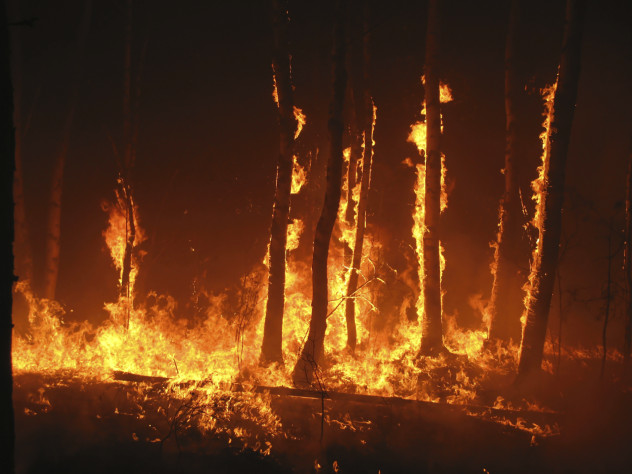
In this Australian movie, a meteor has hit the Earth in the North Atlantic. There is a large firestorm that engulfs the world from top to bottom. People on the bottom of the Earth are celebrating their last hours as the wall of fire makes its way to them with only 12 hours left to live.
Meteors hitting the Earth are a staple of end-of-the-world films. However, what sets These Final Hours apart from other films is the unstoppable wall of fire that is consuming the Earth. Could something like that happen? Well, one research team believes it already did.
When it comes to the extinction of the dinosaurs, most scientists believe it was caused when a comet or an asteroid hit the Earth in what is now Mexico. It created the Chicxulub Crater, which is about 180 kilometers (112 mi) wide. However, there is still much debate as to what exactly the comet or asteroid did to the rest of the world to cause the mass extinction.
A team at the University of Colorado–Boulder performed a test and they believe that after the comet or asteroid hit, it created a wall of fire that consumed the Earth. They said that when it hit, it would have sent rock particles above the atmosphere. They would then form grains of sand and reenter the atmosphere. They would have been incredibly hot and made the atmosphere 1,500 degrees Celsius (2,700 °F).
They said it would have been like a one-megaton bomb going off every 6 kilometers (4 mi). It would move in a rolling wave, burning everything in its path. The major difference between a real global firestorm and the one depicted in the film is that it would take a lot less than 12 hours.
Will an asteroid hit the Earth? Well, a kilometer-sized asteroid, called 1950 DA, could hit the Earth. It would be like 44,800 megatons of TNT exploding. The good news is that it isn’t expected to crash into the Earth until March 16, 2880. Even then, there is only a 1 in 4,000 chance of a collision.
7Worldwide Flooding
Flood
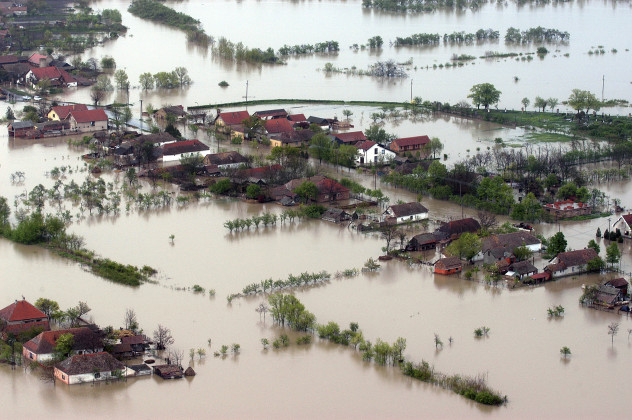
In Stephen Baxter’s 2008 novel Flood, the world is submerged underwater. At first, everyone thinks that it is happening because of climate change. However, since it is happening so fast and the water levels are getting way too high, they realize there must be something else causing the flood. Turns out there were seismic shifts on the ocean floor that opened up reservoirs that released so much water that, by 2052, even Mount Everest was underwater.
Some readers of the Bible will say a great flood that spanned the world already happened. While evidence suggests that levels in the Black Sea did rise up about 9,400 years ago, the Earth didn’t flood. Also, not even all the ice caps melting would cause the Earth to flood like in Waterworld.
However, like in Flood, there are real reservoirs under the Earth’s surface about 650 kilometers (400 mi) below the surface between the upper and lower mantle, which they call the transition zone. The water is locked in a mineral called ringwoodite.
Based on their findings, they believe that, trapped underground, there is enough water to fill the oceans of the world three times. Now, could the water travel to the surface? Interestingly enough, that is one theory on where the water on Earth originally came from. They believe that, due to seismic activity, the water escaped and came to the surface, filling the oceans. If it happened once, there is a possibility it could happen again.
6Brain Wave Disruption
Cell
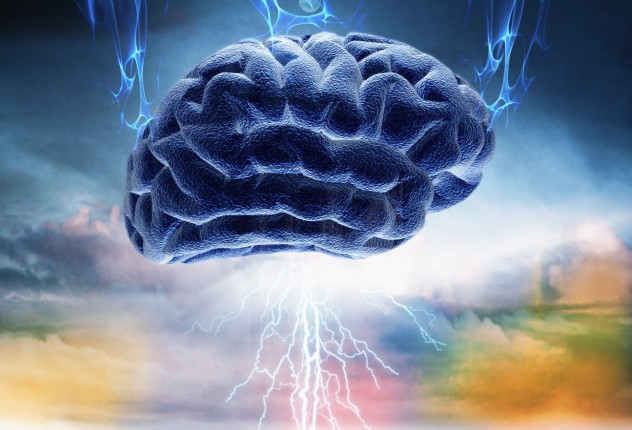
In Stephen King’s 2006 novel, Cell, every cell phone in the world rings at the same time. If people answer the phone, it disrupts their brain waves and turns them into homicidal zombies. In the first couple of minutes, people are attacked and killed off. Then, all the people who answered their phones turn into a horde of zombies seemingly controlled by one unknown master.
So, is it possible for waves from a cell phone to disrupt our brain waves? Well, according to some researchers, it already does. Researchers found that if a phone signal was at the right frequency it could affect behavior in people. For example, they found that it made it harder for people to fall asleep when a phone attached to their head was turned on without their knowledge. While it is nothing too major, researchers are just starting to learn what effects cell phones have on the brain.
If a transmission were to find the right frequency to alter the brain’s limbic system, we might have a problem. The limbic system is where things like emotion and adrenaline are controlled. If the frequency were to turn up the rage and increase adrenaline levels, then anyone carrying a cell phone could become homicidal.
5Microorganism Invasion
The Andromeda Strain
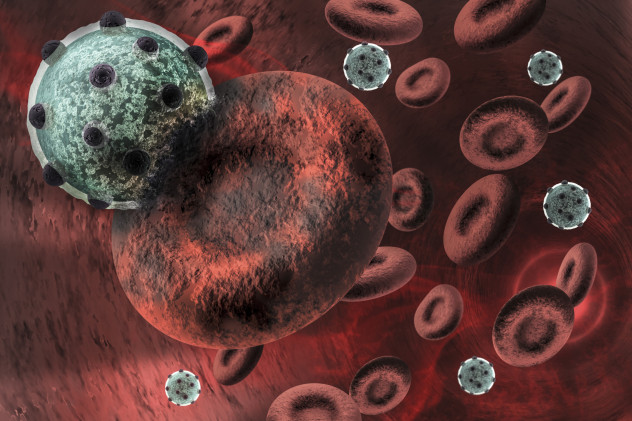
Michael Crichton’s 1969 novel was adapted into a film in 1971 and was made into a miniseries in 2008. In the story, a satellite crashes near a small town in Arizona. Once on Earth, the satellite releases a microorganism that spreads quickly and causes deadly blood clotting or insanity. A team of experts is sent in to hopefully stop the outbreak from spreading.
So, are people on Earth in danger of being infected with a microorganism or some type of virus from space? Well, the good news is that there is no proof that bacterial or viral pathogens exist anywhere else, except for Earth. However, that doesn’t mean they don’t exist, and it is a genuine fear among experts when exploring space.
One of the biggest problems is that, as humans evolved, they built defenses against Earth-bred diseases. A completely alien virus, even a weak one, could be devastating to humankind. And how bad could it get? Well, there is a group of astronomers from Cardiff University who believe that people already have gotten sick from the dust from comets. They think that one of the biggest outbreaks caused by comet dust was the Spanish flu epidemic of 1918 that killed at least 20 million people.
4Global Famine
Interstellar
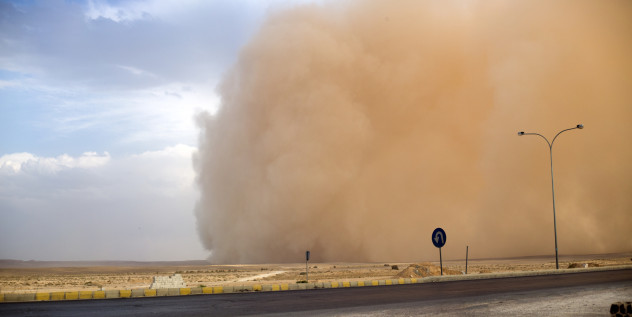
In Christopher Nolan’s 2014 sci-fi epic, the world is running out of food and dust storms plague the Earth. If another hospitable planet is not found soon enough the people on Earth will starve to death. It’s a terrifying way to go, but is it possible?
Well, one thing that most people know is that dust storms are real events that cause serious damage to crops. One of the most famous dust bowls happened in the 1930s in the Canadian and American prairies, which led to destroyed crops and droughts. But, is it possible for this to happen on a global scale?
Sadly, giant dust bowls are already happening in some areas like China and northern Africa, where millions of acres are being destroyed by dust storms that happen on a yearly basis, caused by overgrazing. Overgrazing is when animals eat from the same area of land over and over again, which tramples the soil and causes erosion.
The problem is that, due to population growth, more food is needed. Without a change in our food sources, there is going to be more overgrazing. Another problem is that we will keep reusing the soil until there are no nutrients left in it. If things do not change, the dust storms could get worse and spread across the world, leading to even less food. Hopefully we won’t have to rely on Matthew McConaughey to save us.
3Rage Virus
28 Days Later

In Danny Boyle’s take on the zombie movie, a highly contagious person-to-person virus that turns people in homicidal savages is released. The virus is passed through bites or other transmission of bodily fluids from one living person to another. (There is a huge difference between that and George A. Romero’s reanimated corpses, which aren’t possible.)
One way humans could turn into homicidal maniacs via a virus is a mutated form of rabies. Currently with rabies, symptoms don’t appear until 10 days to a year after infection. It could become much more dangerous if it mutated and symptoms appeared sooner. Viruses tend to mutate in order to survive.
However, the real danger is if rabies mutates with another virus, like the flu. Luckily for humankind, the influenza virus and rabies are completely different and would not become a hybrid on their own in nature. However, in 28 Days Later, it wasn’t a naturally occurring virus either—it was made in an underground lab.
While it would be very hard and quite unlikely, it is possible. According to Samita Andreansky, who is a virologist at the University of Miami’s Miller School of Medicine, you could mix the flu with rabies to make it more contagious, then add in elements from the measles to alter the personality, and add in the encephalitis virus, which would give the infected person a fever to make them even more aggressive. Those elements would create a scary and contagious virus that could turn people into homicidal maniacs.
2Man-Made Virus
12 Monkeys

In 12 Monkeys, a man-made a virus wipes out most of mankind. The remaining humans are forced underground. Luckily, they have invented time travel, and they send a man named James Cole to the past to collect information on the disease and a group called the 12 Monkeys.
Disease is, of course, a good way to wipe out a whole lot of people. Currently, there are no diseases in the world that are that quite as deadly or contagious as the film’s virus—not even Ebola. However, what happens if a virus is manufactured like in the movie? Well, the bad news is that scientists have already done that.
For example, a research team at the Erasmus Medical Center in Rotterdam, Netherlands mutated the H1N1 virus to become more contagious to ferrets. Ferrets respond in similar ways to humans when infected with the flu. In fact, we can transfer the flu to them, and they can infect us. What’s scary is that after 10 generations of infected ferrets, the disease became airborne and healthy ferrets housed next to infected ferrets would catch the disease.
Scientists said that this is one of the most dangerous diseases to alter because H1N1 is currently hard to transfer from person to person but, when it does, it’s highly fatal. By making it airborne, they are housing an incredibly dangerous and contagious pathogen, and if it were somehow released or got into the wrong hands it would be a pandemic that could kill millions.
The research has proven controversial enough that the US and Dutch governments initially sought to prevent the publication of certain details.
1Electromagnetic Pulse
Revolution
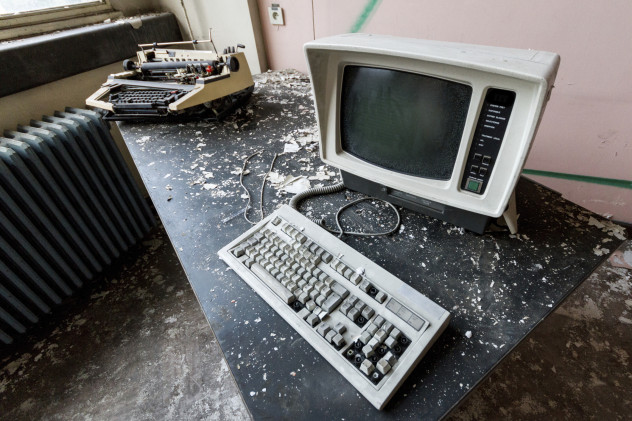
In this two-season television series that started in 2012, all electronics in the world stopped working all at once. Everything simply turned off and never turned back on again. Societies and governments collapsed, effectively ending life as we know it and plunging everyone into the 19th century. The scary thing is that this is a very real problem that governments are worried about.
There are two ways that electronics could be wiped out. The first is through an attack from an electromagnetic pulse (EMP). This could happen if a nuclear weapon was detonated at a high altitude above the Earth. It wouldn’t even need to be a large warhead, and the projectile it’s attached to wouldn’t have to do anything other than reach a high altitude; it could destroy entire electrical grids of countries like the US. It is feared that small rogue countries like North Korea could cripple major world powers using this form of attack.
The second way is that it could happen naturally because of solar storms, which occur with increased activity from the Sun. If a solar flare or a coronal mass ejection (CME) were to hit Earth, it could create the same effects as an EMP. Parts of the world could be without power for months or even years. And this has already happened on Earth. One notable example was in 1857, called the Carrington Event, and it affected the telegraph. Another event in 2012 just barely missed Earth, and the chances of a CME hitting Earth before 2024 are 12 percent.
Due to the fact that we’re so dependent on everything connected to the electrical grid, the results could be devastating to people in urban areas. Almost every aspect of life would be affected, including banking, communications, and basic essentials like getting food and water. Another major problem is that we would lose refrigeration, which we’ve become highly dependent on for things like storing food and basic medicines.
The danger is so real that the US government actually formed The Commission to Assess the Threat to the United States from Electromagnetic Pulse Attack. It released reports in 2004 and 2008 that said up to 90 percent of Americans could die from disease, starvation, and from the ensuing breakdown of society.
Robert Grimminck is a Canadian crime-fiction writer. You can follow him on Facebook, on Twitter @RobertGrimminck, or visit his website.




